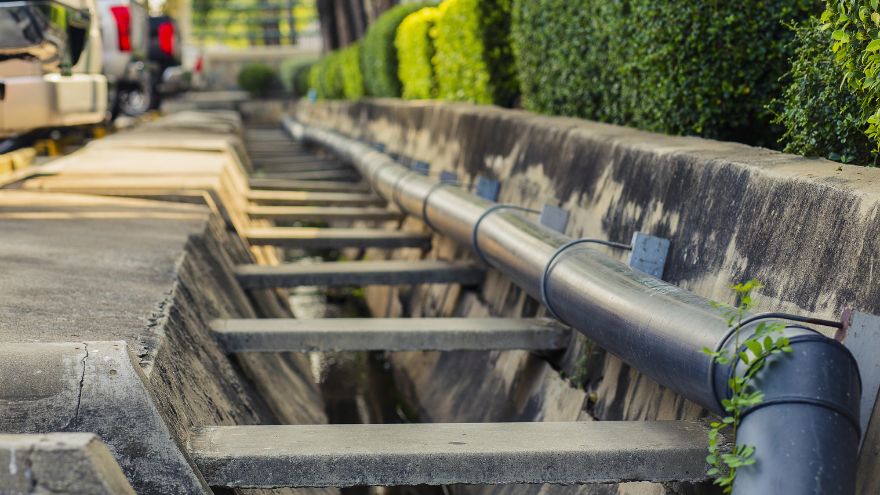Gravity sewage is reliable and has a simple structure. What do you need to know about systems of this type? What materials are best for their construction?

The ability to effectively discharge sewage and rainwater is one of the most important factors to be taken into account when designing various facilities. Designers and contractors have several types of sewage systems to choose from. One of the most popular is gravity sewerage . How does it work? What are the arguments for choosing this solution? What pipes and materials are best for building this type of sewage system? We explain these issues in a new entry.
Check out gravity sewage products at the Onninen wholesaler
What is gravity sewerage and how does it work?
Gravity sewage, as the name suggests, uses the basic laws of physics to operate, and the movement of sewage is driven by its weight and gravitational force. As it does not require the use of any pumping devices, it is the least likely to fail and is characterized by a simple structure. This makes designers and investors eager to choose this solution.
In a sewage system designed in accordance with the principles of sewage, sewage follows a straight path consisting of the following stages:
diverting sewage from sanitary facilities through approaches to sewage stacks;
sewage disposal into horizontal drains;
supplying sewage to the recipient: home sewage treatment plant, septic tank or municipal sewage network.
Selection of materials for gravity sewage
The proper operation of gravity sewage depends on many factors. Please remember that this type of systems work best in areas with a natural slope. Proper pipe routing and aeration of the entire installation are also important. Unfortunately, mistakes made at this stage will result in an increased risk of clogging.
In addition to these aspects, when designing sewage systems, it is necessary to remember about the appropriate selection of materials. Modern systems primarily use pipes made of plastic. This choice is dictated primarily by low weight and the resulting easy installation, as well as high resistance. Plastic pipes cope well with high and low temperatures and are resistant to acids, alkalis and biological agents. An important advantage of such materials is their good vibration damping ability.
PP pipes for gravity sewage
One of the materials most often used for the production of gravity sewer pipes is polypropylene (PP). This polymer is available in heat-stabilized variants, which are perfect for installations in which high-temperature wastewater is transported. On the other hand, polypropylene is resistant to frost - it retains its properties even in contact with temperatures of -40 degrees. PP pipes are connected by welding, which greatly facilitates assembly work and reduces their costs.
PVC pipes for gravity sewage
The second material often used to produce sewage pipes is polyvinyl chloride (PVC). It has very similar properties to polypropylene - it is resistant to chemical and biological factors, light and mechanically durable. PVC pipes they have a smooth surface that prevents the deposition of dirt and the growth of microorganisms. A gravity sewage system made of PVC pipes has a durability of approximately 50 years if properly designed and constructed.
At Onninen, you can equip yourself with both polypropylene pipes and those made of polyvinyl chloride. We also offer a wide selection of connectors, connections, gate valves and other accessory elements. We also guarantee our clients the opportunity to purchase dedicated tools - e.g. welding machines. If necessary, our experienced staff also provides professional advice on the selection of elements and tools adapted to the specificity of your gravity sewage installation.